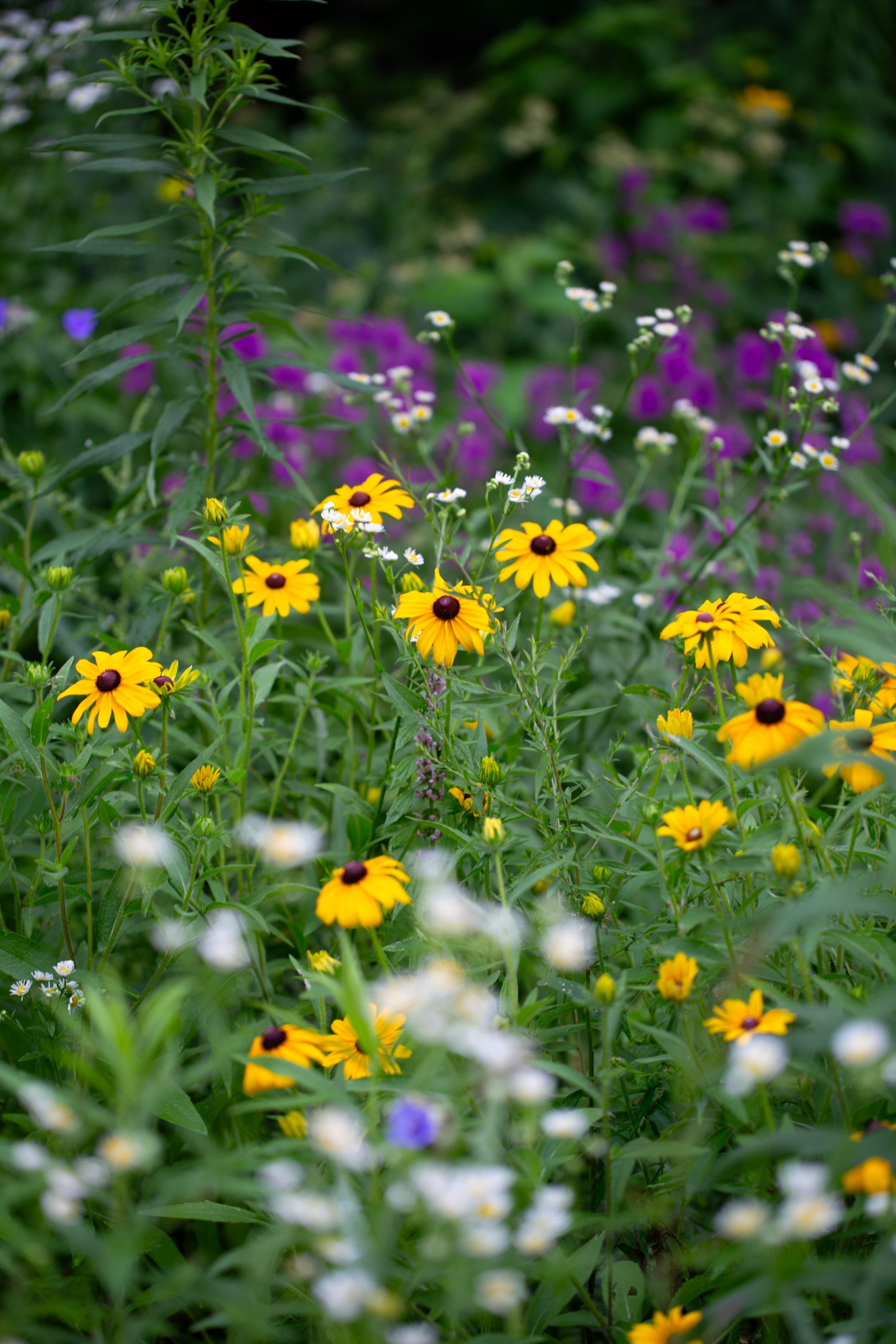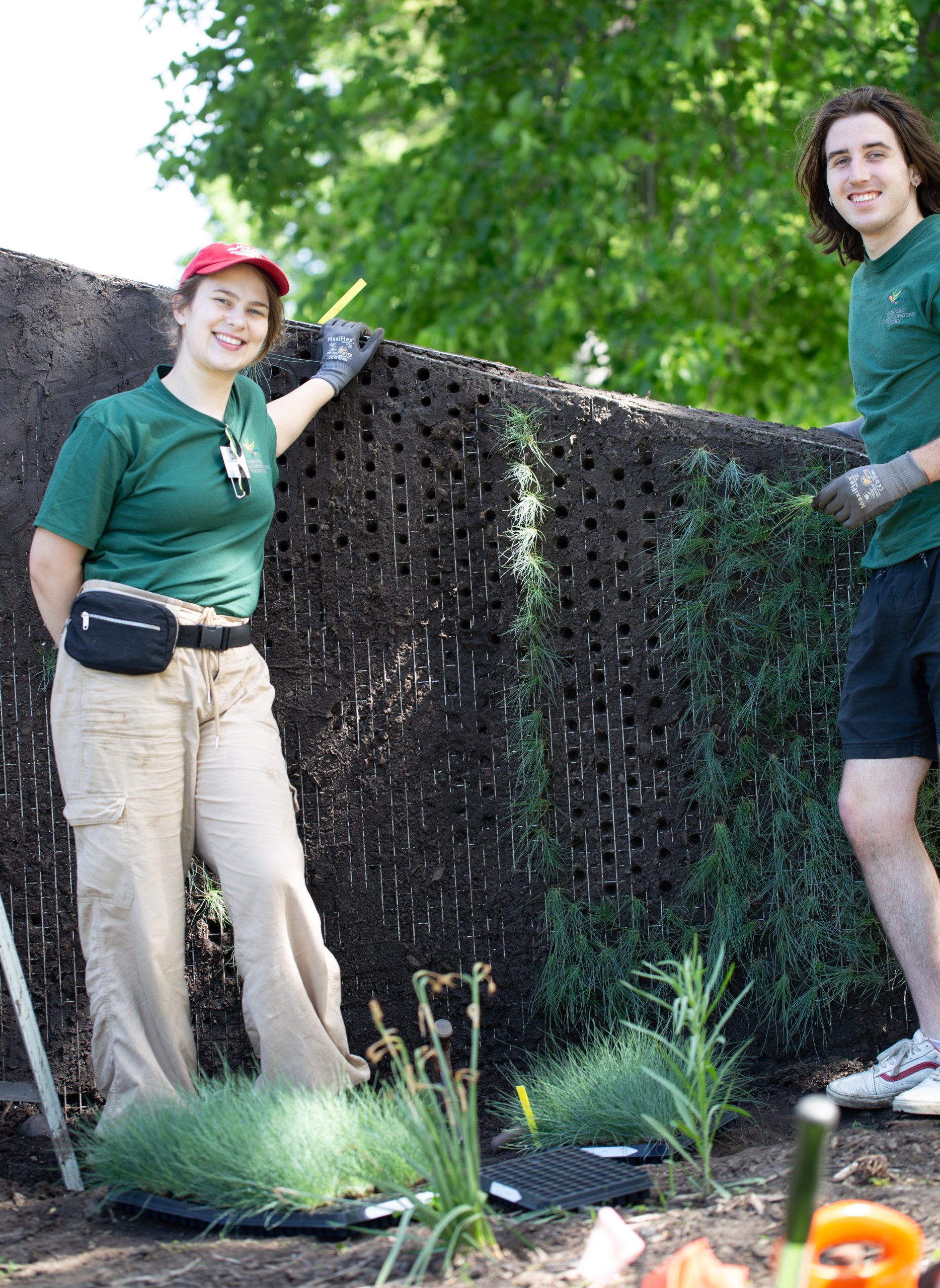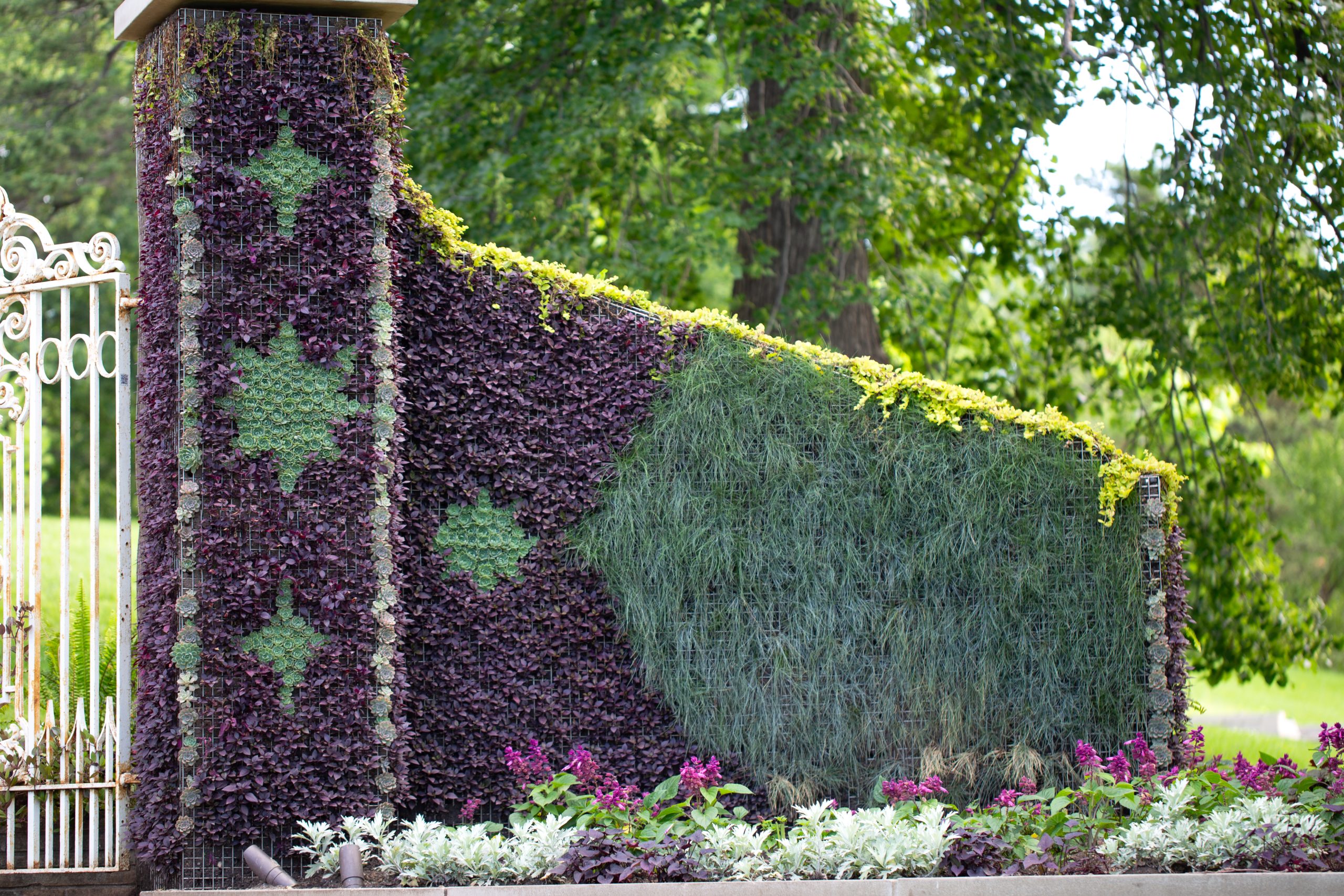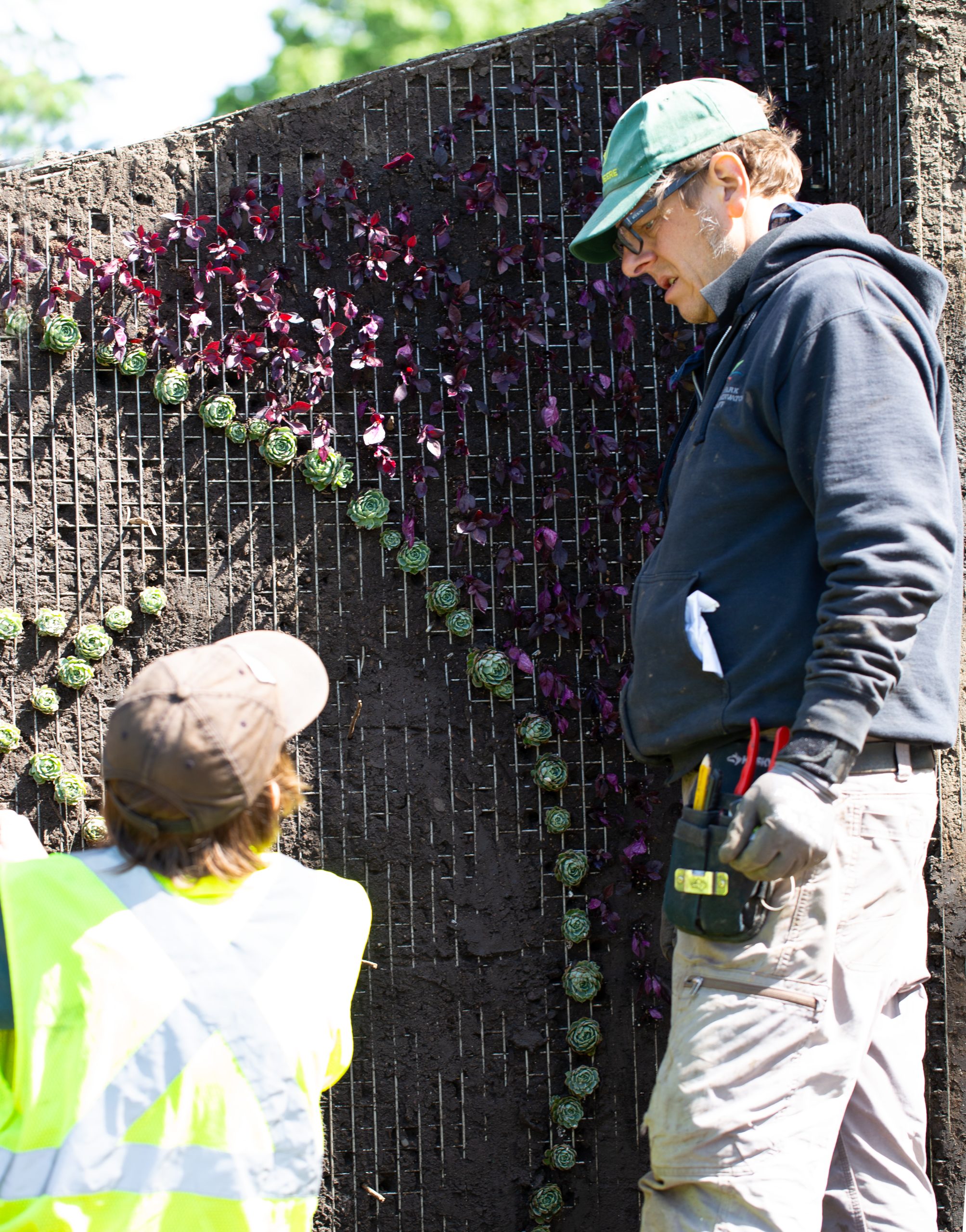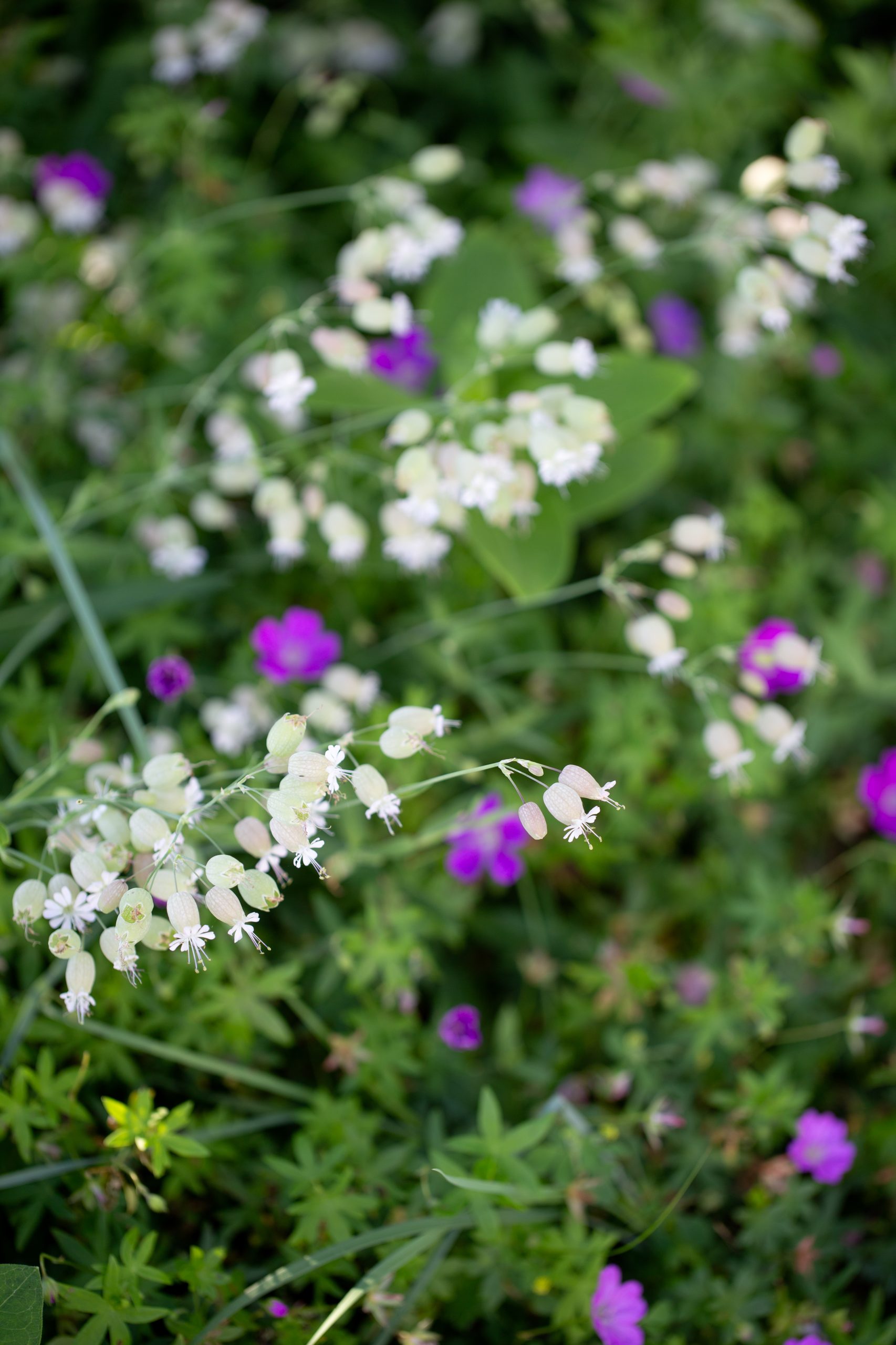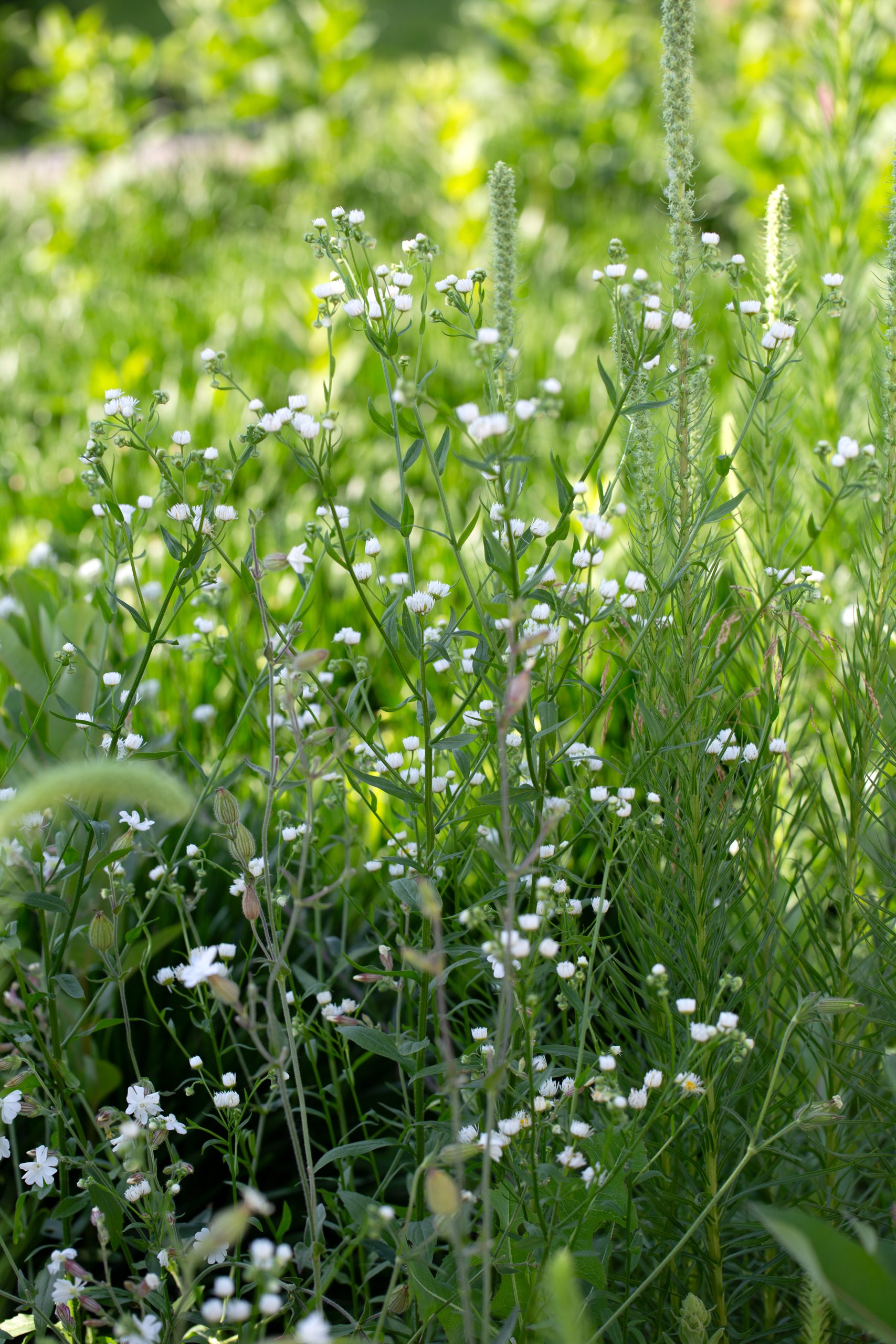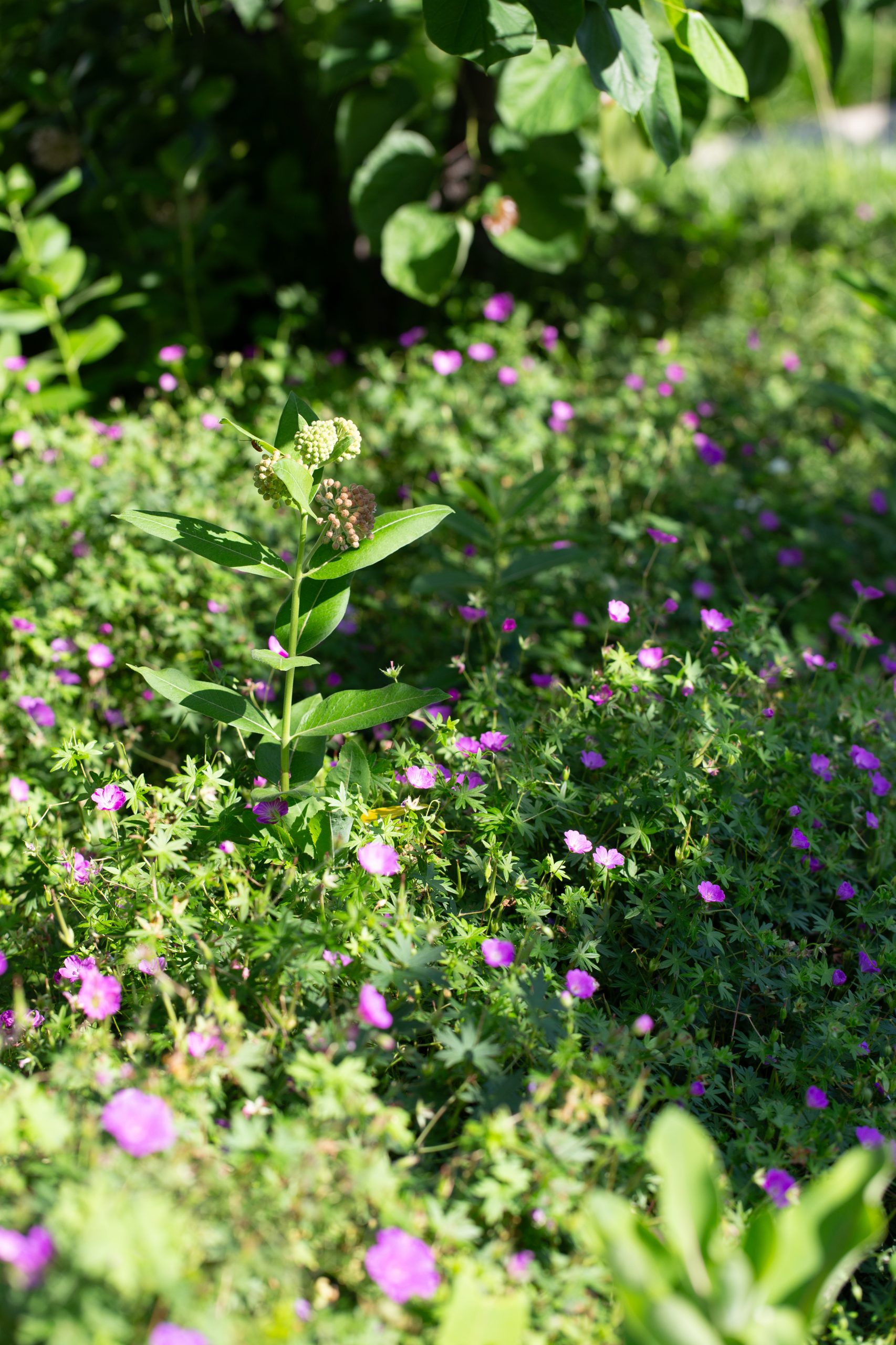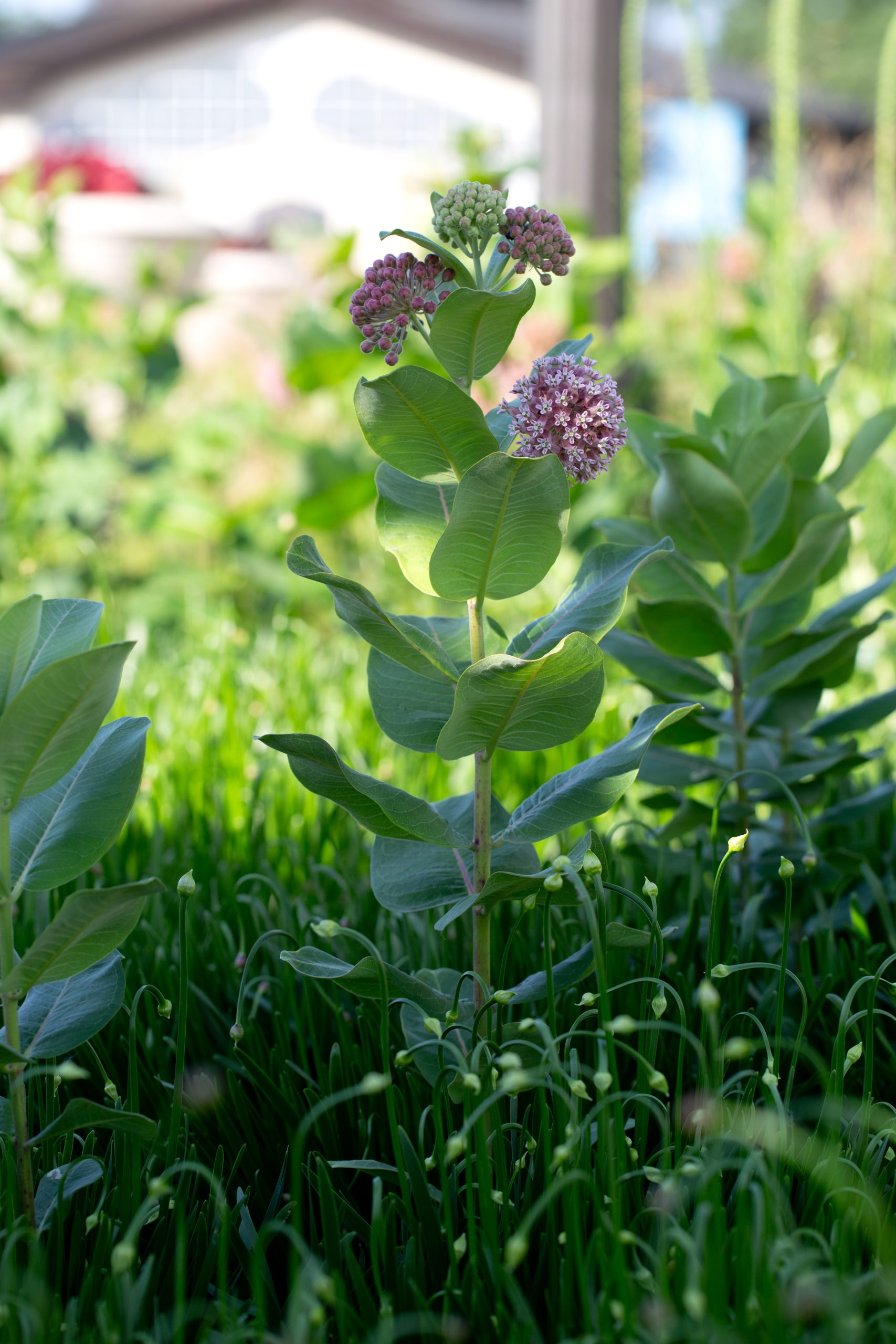
With support from Como Friends, horticulturists at the Marjorie McNeely Conservatory are designing a more sustainable gardening plan for Como’s exterior spaces
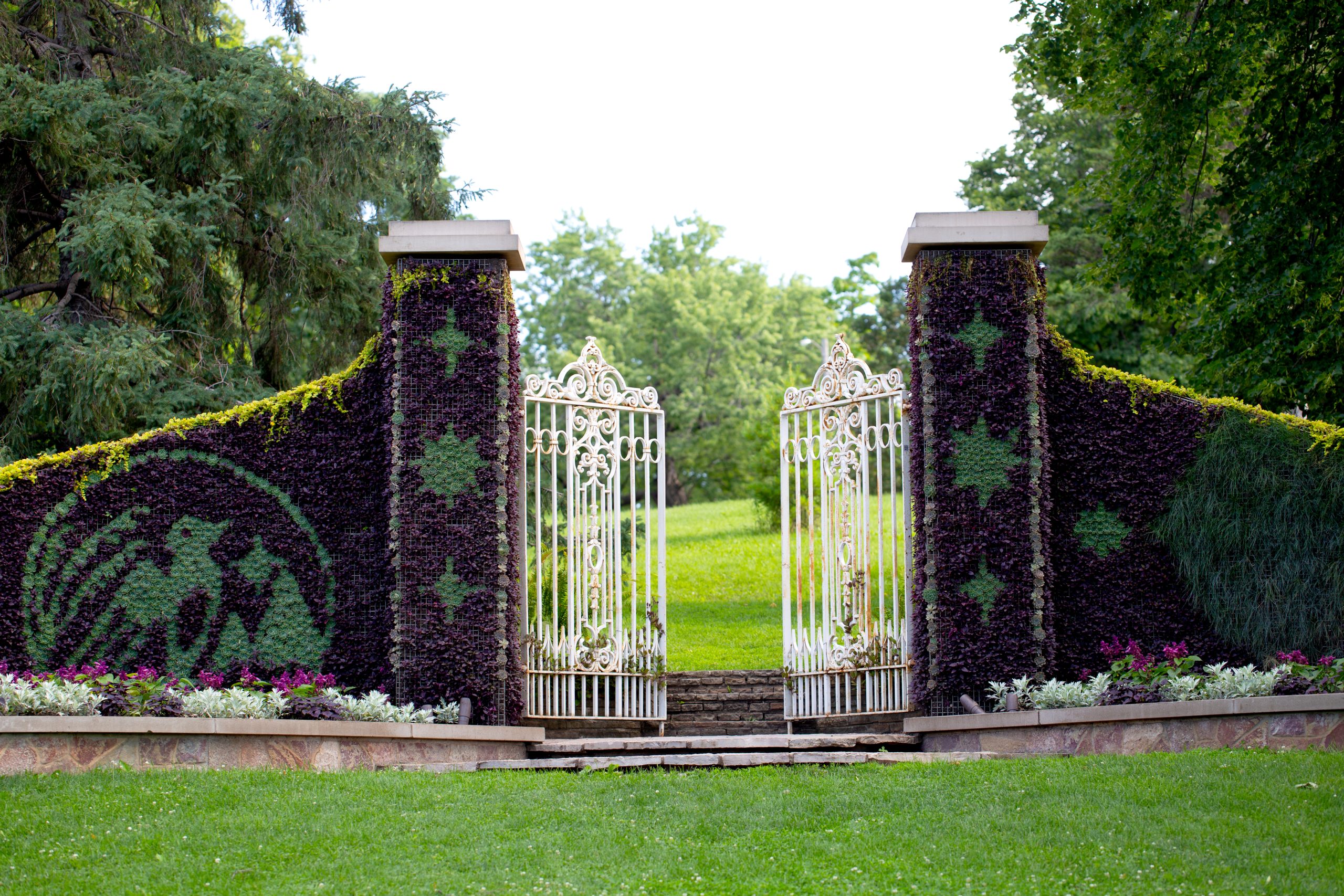
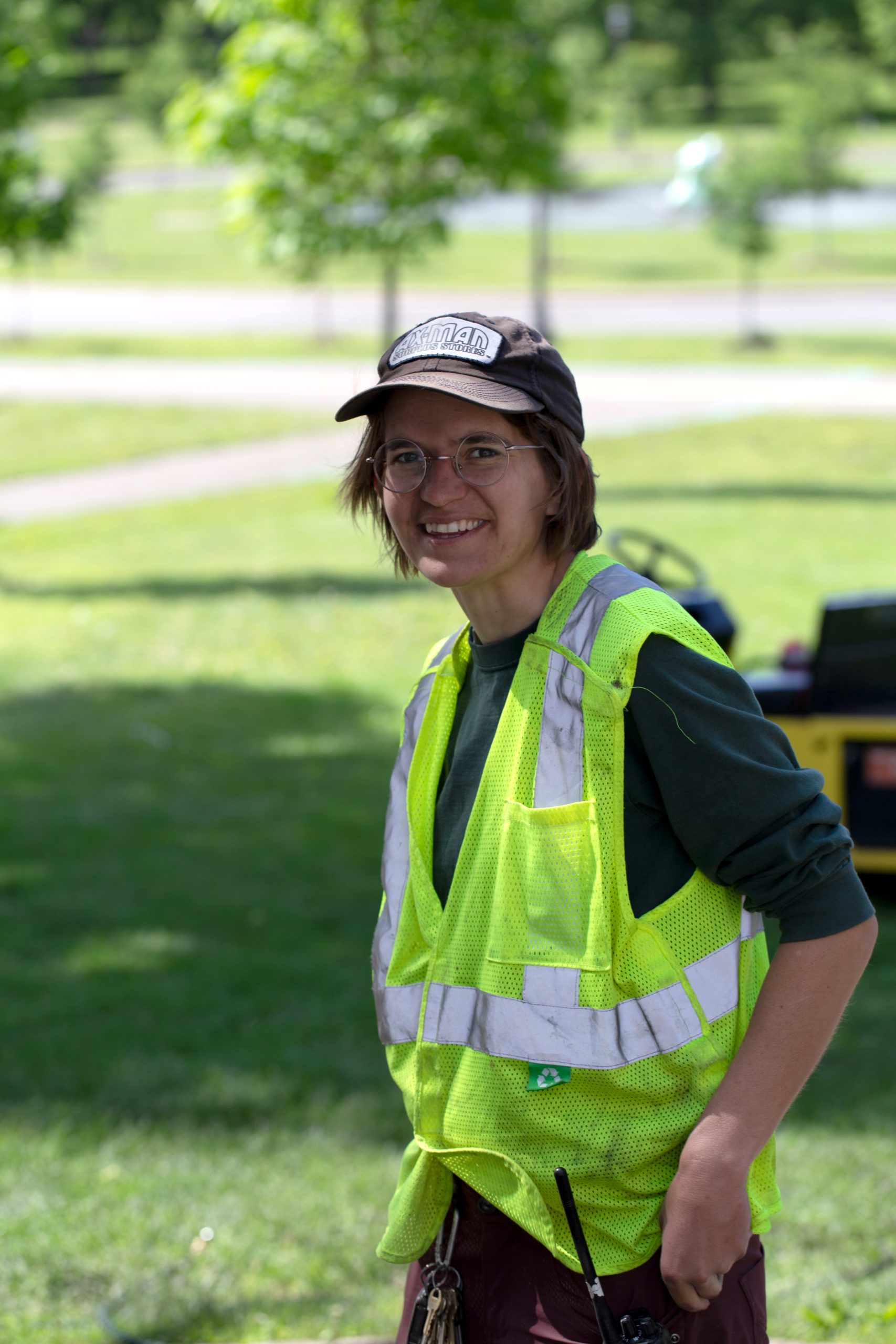
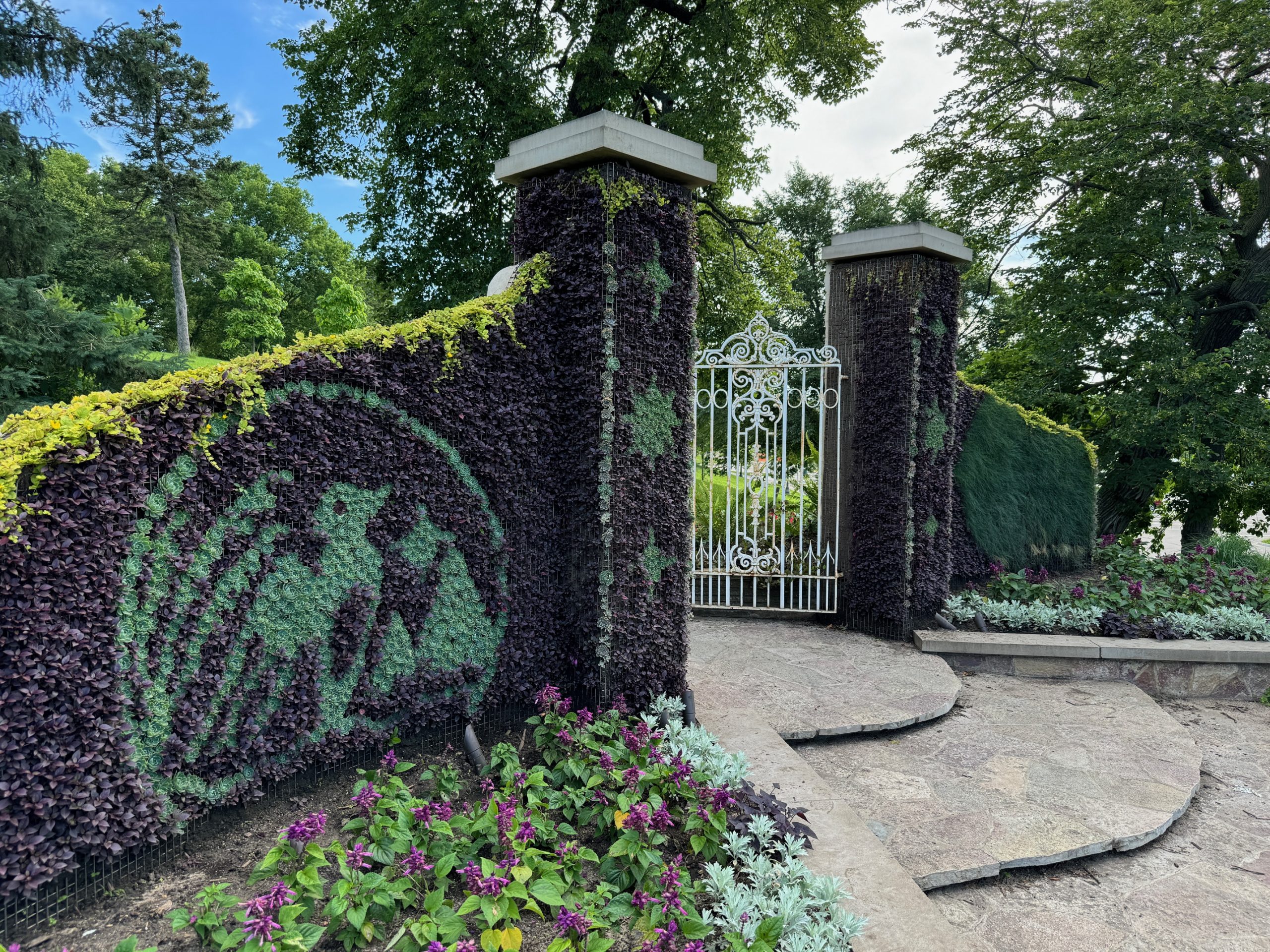
Making Como’s extensive exterior gardens look good is hard work, but Marjorie McNeely Conservatory horticulturist Marie Day gets lots of encouragement to keep at it.
“One of my favorite things about this job is just how much positive feedback you get from the public,” she says. “I can be out there, working in a garden, maybe even feeling stressed out that something isn’t looking the way I want it to, and then I’ll have 10 people walk by telling me how beautiful it is. I don’t think that’s something most people get to experience in their jobs, and it really lifts you up and makes you feel you’re doing something that matters.”
Day’s latest horticultural project is Gates Ajar, the traditional mosaiculture feature Como gardeners have created for more than a century. Located across Lexington Parkway near Como Lake, this year’s design features Minnesota’s new state flag and seal rendered in a mix of colorful alternanthera and echeveria, a fast-growing succulent. Installing this year’s display of more than 5,000 annuals and 300 bedding plants required more than 100 gardener hours, while maintaining it typically requires 45 minutes or more of watering every day. “It’s a big project and an important tradition,” says Day. “Every year, our goal is to make it a little more creative, and a little more surprising.”
Another project visitors may notice this season is a shift toward more perennials and native plants in garden beds around Como’s campus, as horticulturists replace more traditional tropical annuals. For instance, the Minnesota Garden that greets visitors at Como’s front door will be even more Minnesotan this season with the phased planting of a host of new native plants like rattlesnake master, prairie dropseed, false indigo and prairie alumroot.
“There are two big reasons for making this shift,” says Day. “One is that we just have a really huge amount of garden space to take care of, and having those perennials established means that we’ll have more time to bring a higher standard of care to all of our exterior gardens.
“The other reason is, as we think about climate change, having areas that are filled with nothing but tropical plants that need a lot of tending is just not sustainable,” she says.
“Perennials are more drought tolerant, more tolerant to heat, and are also really good for pollinators.”
